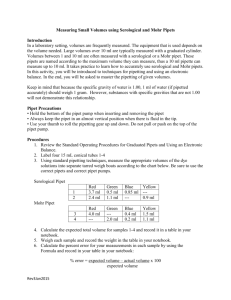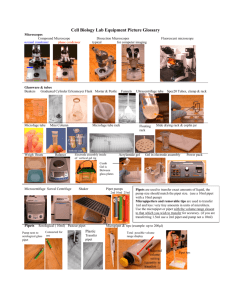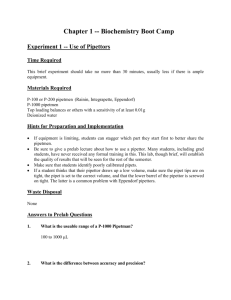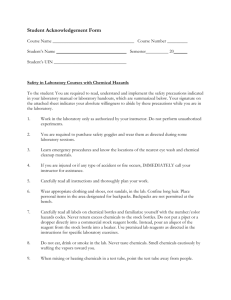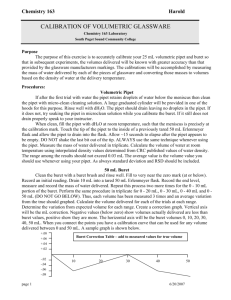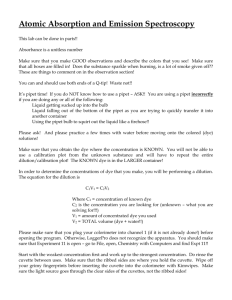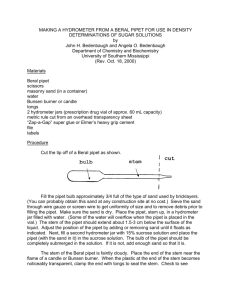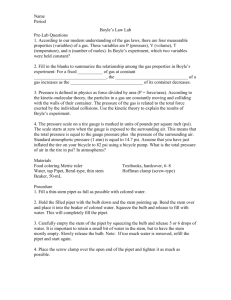Pipetting using Mechanical pipettors
advertisement
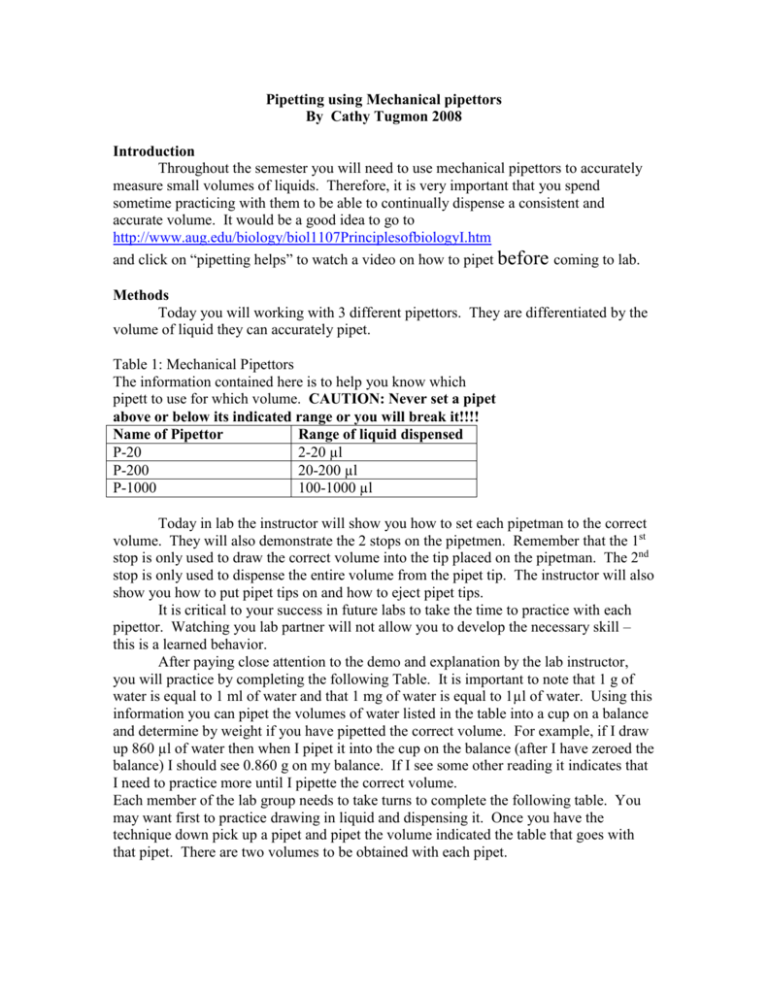
Pipetting using Mechanical pipettors By Cathy Tugmon 2008 Introduction Throughout the semester you will need to use mechanical pipettors to accurately measure small volumes of liquids. Therefore, it is very important that you spend sometime practicing with them to be able to continually dispense a consistent and accurate volume. It would be a good idea to go to http://www.aug.edu/biology/biol1107PrinciplesofbiologyI.htm and click on “pipetting helps” to watch a video on how to pipet before coming to lab. Methods Today you will working with 3 different pipettors. They are differentiated by the volume of liquid they can accurately pipet. Table 1: Mechanical Pipettors The information contained here is to help you know which pipett to use for which volume. CAUTION: Never set a pipet above or below its indicated range or you will break it!!!! Name of Pipettor Range of liquid dispensed P-20 2-20 µl P-200 20-200 µl P-1000 100-1000 µl Today in lab the instructor will show you how to set each pipetman to the correct volume. They will also demonstrate the 2 stops on the pipetmen. Remember that the 1st stop is only used to draw the correct volume into the tip placed on the pipetman. The 2nd stop is only used to dispense the entire volume from the pipet tip. The instructor will also show you how to put pipet tips on and how to eject pipet tips. It is critical to your success in future labs to take the time to practice with each pipettor. Watching you lab partner will not allow you to develop the necessary skill – this is a learned behavior. After paying close attention to the demo and explanation by the lab instructor, you will practice by completing the following Table. It is important to note that 1 g of water is equal to 1 ml of water and that 1 mg of water is equal to 1µl of water. Using this information you can pipet the volumes of water listed in the table into a cup on a balance and determine by weight if you have pipetted the correct volume. For example, if I draw up 860 µl of water then when I pipet it into the cup on the balance (after I have zeroed the balance) I should see 0.860 g on my balance. If I see some other reading it indicates that I need to practice more until I pipette the correct volume. Each member of the lab group needs to take turns to complete the following table. You may want first to practice drawing in liquid and dispensing it. Once you have the technique down pick up a pipet and pipet the volume indicated the table that goes with that pipet. There are two volumes to be obtained with each pipet. Table 2: Practicing Pipetting Set the appropriate pipet for each of the volumes listed in the first column. Pipet each volume 2 times or until you get an accurate weight. Record your best 2 attempts. Volume Weight Weight 1000 µl 513 µl 50 µl 156 µl *2 µl *17 µl *These volumes require a more sensitive balance and will only be done if that balance is available in lab or if we have some pre-marked tips for these amounts.

